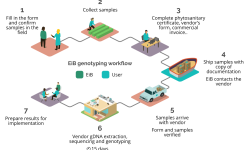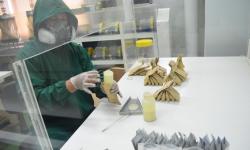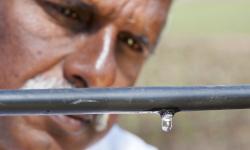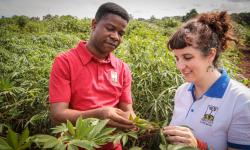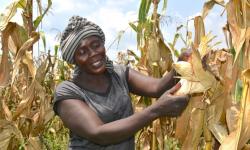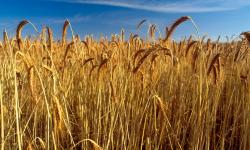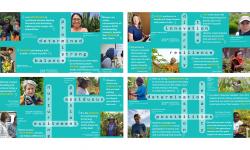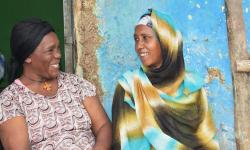All news and blogs
New genotyping services launched across CGIAR and partners
EiB news | Adam Hunt | 14/4/2021
CGIAR Excellence in Breeding has launched new low-cost, high throughput genotyping services, positioning CGIAR and national breeding programs to take a leap forward in delivering vital crop varieties.The Low Density SNP Genotyping Services (LDSG) provide...
Seeding excellence through breeding excellence
| Adam Hunt | 5/4/2021
Originally published by Asian Seed Magazine. Written by Adam Hunt, EiB Communications lead. CGIAR Excellence in Breeding is working with partners to catalyze a transformation of public crop breeding programs across Asia, Africa and the developing world.When parts of Asia looked to be on the brink of famine in the 1960s, scientists transformed agriculture through the Green Revolution. Catalyzed by the research-for-...
In a water-challenged world, crop breeders must do more than go with the flow
Opinion | Adam Hunt | 22/3/2021
With water sources dwindling and harsher climate conditions on the rise, farmers in the developing world need both better crop varieties and improved water management practices. This World Water Day, Gustavo Teixeira, EiB Module...
New digitization equipment set to accelerate Kenya agriculture agency’s breeding programs
EiB news | Adam Hunt | 15/3/2021
The equipment will help speed up and enhance the accuracy of various breeding processes including seed preparation, data collection, data analysis and inventory management. The CGIAR...
New approaches to breed more inclusive crop varieties
Success story | Sam Storr | 5/3/2021
Hale Ann Tufan, right, inspects a cassava plant with Chiedozie Egesi, program director for the NextGen Cassava project, during a visit to research fields in Namulonge, Uganda. Credit: NextGen Cassava. New crop varieties can help farmers thrive in...
Researchers identify optimal strategy to maximize genomic estimated breeding values
Partner news | | 2/3/2021
The ultimate challenge for crop breeders is to increase genetic gain of a crop: literally, to increase the crop’s yield on farmers’ fields. Wheat and maize breeders from the International Maize...
Breeders take quantum leap towards state-of-the-art data methods via Wheat Initiative trainings
EiB news | Adam Hunt | 15/2/2021
Wheat breeders from across the globe took a big step towards modernizing their molecular breeding skills at recent workshops sponsored by the Wheat Initiative, with the CGIAR Excellence in Breeding...
Breeding scientists are women of their word
Opinion | Adam Hunt | 9/2/2021
If you had to choose one word that symbolizes “women in science,” what would it be? CGIAR Excellence in Breeding asked this question to an array of women working across the crop breeding domain. Their answers show us a scientific field full of hope and accomplishment, but still struggling with...
Cues to making crop improvement in Africa gender responsive
Partner news | | 31/1/2021
A cluster of activities are helping make The Accelerated Varietal Improvement and Seed Delivery of Legumes and Cereals in Africa (AVISA) Project’s crop improvement efforts gender-responsive. The activities include: Gender responsiveness in...
CGIAR breeding brings major returns on investment, finds study
EiB news | Adam Hunt | 26/1/2021
Governments and foundations investing in CGIAR are seeing extraordinary value for money, according to a recent international report. The investment has generated a 10 to 1 return, and breeding science is highlighted as a major contributor.Commissioned by...
